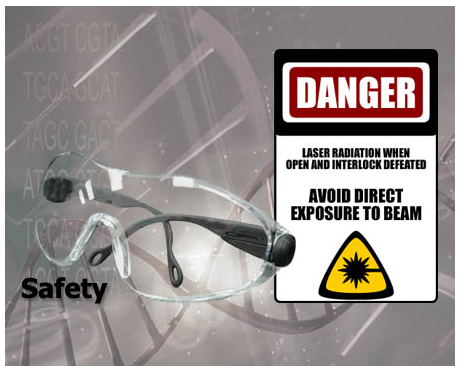Archival Notice
This is an archive page that is no longer being updated. It may contain outdated information and links may no longer function as originally intended.
Home | Glossary | Resources | Help | Contact Us | Course Map
Introduction
The goal of any laboratory safety program is to minimize the risk of injury or illness to employees by ensuring that they have the training, information, support, and equipment needed to work safely in the laboratory. The guidelines and standards set forth by the existing regulatory agencies assist laboratories in ensuring that this goal is met.
There are a number of regulatory agencies and some private organizations that establish safety guidelines, all of which have differing sets of procedures and/or standards. Some agencies may incorporate a less stringent program, while others establish more rigorous standards. In addition, state agencies may create programs that can be more stringent than the federal counterpart. It is the laboratory safety officer's responsibility to coordinate with the appropriate state and local authorities to ensure that the laboratory's safety program is in compliance with the relevant regulations. Visit the Occupational Safety and Health Administration (OSHA) website for a list of states that have their own programs.
Taking the Course
Starting the course. Select the top link in the navigation on the right.
Navigating the course. We recommend you go through the course page-by-page using the Forward and Back buttons at the bottom of the page. You may skip around and select lessons using the navigation on the right.
PDF Version of this Course
There is a PDF version of this course available. View the Full Course PDF version.
Lessons
Information addressed in this interactive training program is delivered in two modules. Select a module below to begin.
| Lesson |
|---|
Additional Online Courses
- What Every First Responding Officer Should Know About DNA Evidence
- Collecting DNA Evidence at Property Crime Scenes
- DNA – A Prosecutor’s Practice Notebook
- Crime Scene and DNA Basics
- Laboratory Safety Programs
- DNA Amplification
- Population Genetics and Statistics
- Non-STR DNA Markers: SNPs, Y-STRs, LCN and mtDNA
- Firearms Examiner Training
- Forensic DNA Education for Law Enforcement Decisionmakers
- What Every Investigator and Evidence Technician Should Know About DNA Evidence
- Principles of Forensic DNA for Officers of the Court
- Law 101: Legal Guide for the Forensic Expert
- Laboratory Orientation and Testing of Body Fluids and Tissues
- DNA Extraction and Quantitation
- STR Data Analysis and Interpretation
- Communication Skills, Report Writing, and Courtroom Testimony
- Español for Law Enforcement
- Amplified DNA Product Separation for Forensic Analysts


